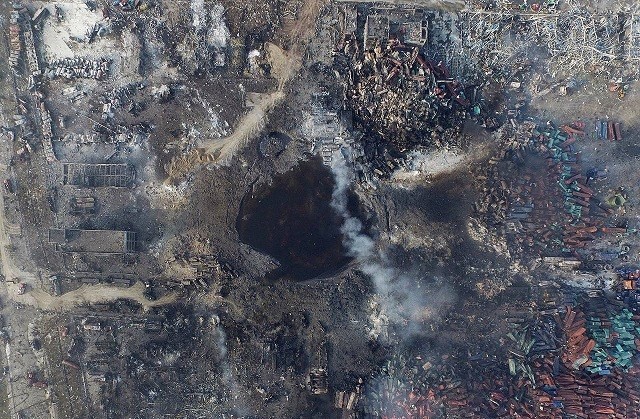Countless projects have dealt with the management of forest and wildfires in the last 30 years, under the standpoints of fuel assessment, hazard assessment, hazard change monitoring, detection and monitoring of active fires, assessment of their impact and evaluation of related costs. In Italy, the fight against forest fires is ruled by law no.353/2000, which includes penalties for landowners on whose land wildfires develop. Law 353/2000 was the first Italian law to acknowledge synoptical-thematic evidence provided by spaceborne EO.
Common to many regions in the temperate and subtropical belt worldwide, the problem of suburban fires caused by burning of wastes gained outstanding European visibility in the hinterland north of Naples (Campania, Italy), where a ca. 1,000 km2 zone defined “Terra dei fuochi” (“Land of fires”, LF afterwards) was/is systematically plagued by wild dumping and burning of all type of wastes. This illegal practice has given rise to leakage and spreading of toxic substances (like dioxin, e.g.) in soils and aerosols, with suspected correlation between environmental pollution and lung, skin and blood pathologies. The fight against this kind of pollution is regulated by the Italian law no. 6/2014, forbidding and punishing waste burning as an environment harming practice. With a few major exceptions, LF fires typically display low radiating powers (typically <50MW), making difficult to detect their onsets from space.
The prevention of Seveso-type accidents is addressed by the European Directive “Seveso III”, which came into force on 1st June 2015, dealing specifically with the control of on-shore major accident involving dangerous substances. There about 13,000 ‘Seveso’ sites in EU and all are committed to run a monitoring-and-alert system, have internal (to factory) and external emergency plans, and duly inform the public of the way to behave in case of accident alert. By the Italian law, the National Fire and Rescue Service of the National Firemen Corps (CNVVF) is the unique national Entity in charge of the enforcement of the Seveso Directives, and the regulatory mitigation of the inherent risk. Explosions and hazmat plumes sprung from major Seveso-type accidents occurring within or out known Seveso sites can be observed from space, although timeliness and observation thresholds are difficult to assess. The major accident of Tianjin (China, 12 August 2015) is the last relevant such event captured by EO.
TALED System: TELECOMMUNICATION, LOCALIZATION AND REAL TIME ENVIRONMENT DETECTION
TALED will demonstrate an innovative integrated TLC/EO/GNSS platform to cope in RT/NRT with all kind of Fire incidents: Forest, Wild, Waste and Hazmat Fires. Designed to operate from detection to operational response, anywhere and 24/7, TALED originates from the need of institutional operators committed to improve the management of alerts, technical response, rescue and information. SMA Campania is a public company in charge of preparedness, information management and emergency response to all kind of fires.
TALED will provide SMA (as, in perspective, public/private/public-private companies with similar characteristics) with the possibility of remotely controlling and managing firefighting operations, in order to improve the workforce, aerial and terrestrial vehicles management.
The service will include geographical information, as the tracking of the field operators, early warning of fires, and the prediction of short-term, fire & smoke evolution. Moreover TALED will provide mixed Sat/Local TLC connection in the operation scenario, often not covered by the terrestrial TLC services.
TALED is designed to integrate and improve the current regional remotely accessible DSS, exploited by the various actors involved in firefighting. TALED target market is mainly based on the actual business of SMA Campania, the service provider of the demonstration project: the final customer of the actual service is the government of Campania Region.
USERS AND THEIR NEEDS
Three main users/actors, managing fire-alarms and associated emergencies, are involved:
SMA Campania, a public-owned Campania Region company, manages environmental emergencies within the regional boundaries, including forest and waste fires. SMA is a partner and the main service provider of TALED.
CNVVF National Firemen Corp, is in charge of the prevention and the operational response to all kind of fires, both on ground and by fixed wing aircrafts and large helicopters.CNVVF is a partner of, and information provider to TALED.
Mountain Communities are in charge of managing local forest resources, including their defence against fires and natural threats. Mounts Lattari Natural Park is an interested user and potential customer.
Users express the needs to get:
- better and more effective coordination in alarm collection and dissemination.
- better and more effective on-field coordination during emergencies
- better safety of field operators
- improved efficiency of water bombing
- in-house capacity for mapping burnt areas
TALED will answer those needs providing:
- geographic RT/NRT information: EO based maps and info’s coming from other existing early warning systems,
- connectivity to the field teams, even in absence of terrestrial network coverage,
- localization and safety devices to the field operators, even when operating far from the satellite link mobile station.
The country of the targeted users is Italy.











